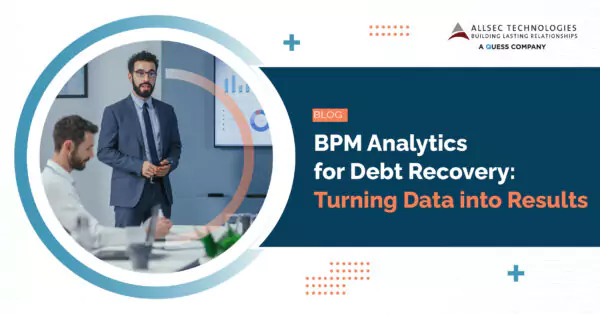
From identifying high-risk accounts to optimizing collection strategies, every step requires precision and insight. Traditional, intuition-driven approaches are giving way to data-driven decision-making, fueled by the power of Business Process Management (BPM) and its embedded analytics capabilities. In this blog, let’s explore how analytics can help in debt recovery.
The Role of Analytics in BPM
Analytics serves as the cornerstone of modern debt recovery management. By harnessing the power of data, organizations can extract actionable insights, mitigate risks, and enhance operational efficiency. Here’s how analytics enhances key aspects of debt recovery within BPM:
- Predictive Modeling: Advanced analytics techniques enable organizations to forecast future payment behaviors with remarkable accuracy. By analyzing past payment patterns, demographic data, and economic indicators, predictive models identify accounts most likely to default. This proactive approach allows debt recovery teams to prioritize resources effectively, focusing on accounts with the highest probability of recovery.
- Segmentation and Targeting: Analytics facilitates segmentation of debtors based on various attributes such as delinquency severity, payment history, and channel preferences. By understanding debtor personas, organizations can tailor collection strategies to individual needs, increasing the likelihood of successful recovery. Moreover, targeted communication strategies based on analytics insights improve engagement and foster positive debtor relationships.
- Optimized Contact Strategies: Analytics-driven BPM enables dynamic optimization of contact strategies across multiple channels, including a digital-first approach phone calls, emails, and SMS. By analyzing historical interactions and response rates, organizations can determine the optimal timing, frequency, and mode of communication for each debtor. This personalized approach minimizes fatigue and improves response rates, ultimately accelerating debt recovery efforts.
- Risk Mitigation: Analytics not only identifies high-risk accounts but also helps mitigate potential losses through proactive risk management strategies. Real-time monitoring of key risk indicators allows organizations to intervene promptly, preventing accounts from escalating into irrecoverable debts. Additionally, predictive analytics enables scenario planning and stress testing, empowering organizations to anticipate and navigate potential economic downturns effectively.
- Performance Tracking and Continuous Improvement: Analytics provides invaluable insights into the performance of debt recovery processes and strategies. By monitoring key performance metrics such as collection rates, recovery costs, and aging buckets, organizations can identify areas for improvement and fine-tune their BPM framework iteratively. This data-driven approach fosters a culture of continuous improvement, ensuring that debt recovery strategies remain agile and responsive to evolving market dynamics.
Recent Enhancements and Innovations
In recent years, several trends have reshaped the landscape of analytics-driven debt recovery:
- Advancements in Machine Learning: The proliferation of machine learning algorithms has unlocked new possibilities in predictive modeling and risk assessment. From ensemble techniques to deep learning algorithms, organizations now have access to sophisticated tools that can analyze vast datasets and extract nuanced patterns, enhancing the accuracy and granularity of predictive models.
- Integration of Alternative Data Sources: Beyond traditional credit bureau data, organizations are increasingly leveraging alternative data sources such as social media profiles, transactional data, and behavioral analytics. By incorporating diverse datasets, organizations gain a comprehensive understanding of debtor profiles and behaviors, enabling more robust decision-making in debt recovery.
- Embrace of Automation and AI: Automation technologies, coupled with artificial intelligence, have streamlined routine tasks and decision-making processes in debt recovery. Chatbots and virtual assistants handle routine inquiries and payment reminders, freeing up human agents to focus on high-value interactions. Moreover, AI-powered algorithms continuously learn from data feedback, optimizing collection strategies in real-time.
- Enhanced Regulatory Compliance: With the proliferation of data privacy regulations such as GDPR and CCPA, organizations have intensified their focus on regulatory compliance in debt recovery processes. Analytics-driven BPM enables proactive monitoring and auditing of compliance metrics, ensuring adherence to regulatory guidelines while minimizing the risk of fines and penalties.
In conclusion, the integration of analytics within BPM has emerged as a game-changer in debt recovery management. By leveraging data-driven decision-making, organizations can improve collection rates, minimize risks, and enhance operational efficiency. As technology continues to evolve and data analytics capabilities mature, the future of debt recovery promises even greater innovation and effectiveness. Embracing these advancements will be paramount for organizations seeking to stay ahead in an increasingly competitive landscape.
As we witness the transformative potential of analytics in shaping the future of debt recovery, Alldigi remains committed to driving positive outcomes through innovative and data-driven strategies.



